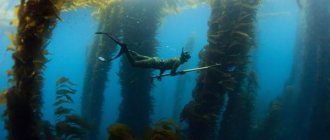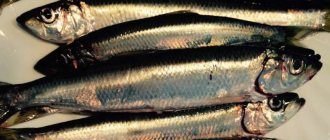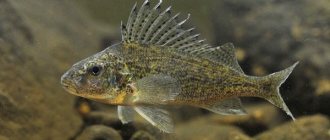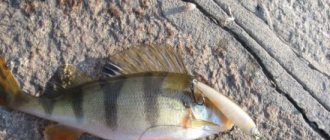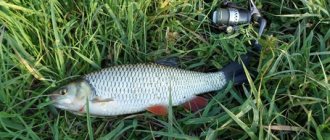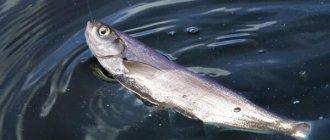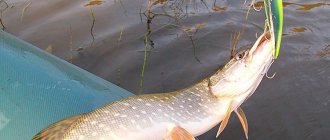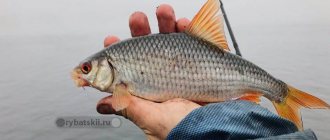Appearance
A characteristic feature of this fish is its high and long fin, reminiscent of a sail, which is where its name comes from. The fin stretches from the back of the head almost to the end of the back. The sail has a pronounced blue color, with an abundance of dark dots. Nearby is a second dorsal fin, similar in shape to the first, but much smaller. The pectoral fins are located closer to the lower part of the body. They are black in color, sometimes you can see light blue spots.
The sailfish is a rather large fish. So, young individuals reach a length of about two meters, and adults - more than three. The weight of large fish is 100 kilograms, but in most cases there are individuals up to 30 kg. The sailboat is distinguished by its rarity and beauty.
Natural enemies of sailfish
Photo: What a sailboat looks like
The swallowtail is the pinnacle of predation, so predation on free-swimming individuals of the species is very rare. They significantly influence prey populations in the open ocean ecosystem. In addition, fish serve as hosts for various parasites.
Mostly sailboats are attacked:
- sharks (Selachii);
- killer whales (Orcinus orca);
- white shark (C. Charcharias);
- people (Homo Sapiens).
It is a commercial fish and is also caught as bycatch in the global tuna fishery. The fish are caught incidentally by commercial fishermen using drift nets, trolling, harpooning and netting. The sailfish are most important as a sport fish. The flesh is dark red and not as good as blue marlin. Sport fishing may pose a potential threat locally, especially since the species is found close to shore and around islands.
The world's highest catch rates of sailfish are found in the eastern Pacific Ocean off Central America, where the species supports multimillion-dollar catch-and-release sport fisheries. In Costa Rica's national longline fishery, many fish species are discarded because the fishery is only allowed to bring in 15% of its catch as sailfish, so the catch is likely underestimated. Recent catch per unit effort (CPUE) data from Central American fisheries has raised concerns.
In the Atlantic Ocean, the species is captured primarily in longline fisheries, as well as some artisanal gear, which are the only fisheries targeting marlin, and various sport fisheries located on both sides of the Atlantic Ocean. The increasing use of anchor aggregation devices (FADs) for various artisanal and sport fisheries increases the vulnerability of these stocks. Results from many assessment models indicate overfishing, particularly in the eastern rather than western Atlantic Ocean.
Legendary sailboats
Photo by Joseph Barrientos on Unsplash Sailing ships date back to the ancient world thousands of years BC. It is not known for certain who held the lead in shipbuilding - Ancient Egypt or China, and the ships themselves have not survived to this day.
However, over the next five millennia, tens of thousands of sailing ships were built in shipyards around the world, including the legendary sailing ships that participated in great geographical discoveries and changed humanity’s understanding of the planet. It is about the most famous sailing ships in the history of our world that will be discussed in this article.
Caracca "Santa Maria"
"Santa Maria" is the main ship of the first expedition of Christopher Columbus, during which America was discovered. The ship itself was only 25 meters long and could accommodate up to 40 people on board. However, in the 14th-16th centuries, carracks were the largest, most reliable and fastest ships in the European fleet. They were mainly used for trade and long ocean voyages.
During Columbus's first American expedition, the carrack "Santa Maria" landed on reefs off the coast of Haiti. The crew removed all weapons from the ship and took supplies. The wreck of the ship was used to build the Haitian fort La Navidad. Unfortunately, not a single original image of this famous ship has reached us. It remains to be content only with the subsequently created drawings.
Karakka "Victoria"
Perhaps the karakka "Victoria" is the most famous sailing ship in the history of the world fleet. After all, it was he who first walked around the world. This happened as part of the expedition of Ferdinand Magellan. True, Magellan himself died during the journey. The caracca was brought back to Spain by its new captain, Juan Sebastian Elcano.
In general, of the 5 ships that set off on this round-the-world expedition, only Victoria managed to circumnavigate the globe and return home. Like the Santa Maria, the three-masted carrack Victoria was small. However, she was seriously equipped with weapons - a dozen cannons on board were supposed to protect the ship from pirates or inhospitable natives. Also, not a single original image of the legendary “Victoria” has survived to this day.
Galleon "Golden Hind"
As for Francis Drake's famous galleon "Golden Hind", which circumnavigated the globe second in history, we can admire not only its images, but also precisely made copies. The most famous replica of the ship can be seen in London on the south bank of the Thames in the Southwark area. By the way, this copy of the “Golden Hind” is not just a museum on the water; in 1973, the ship sailed around the world in the same way as its predecessor.
Francis Drake's round-the-world expedition with the Golden Hind at its head partially repeated the fate of Magellanic voyage on the Victoria carrack. The galleon became the only ship from the expedition that managed to pass the Drake Passage in the very south of South America.
By the way, the ship got its name just after this event; it was originally called “Pelican”. The dimensions of the galleon were very modest - only 36.5 meters in length and up to 7 meters in width. However, this warship was much better armed than its famous predecessors: it had 22 cannons on board.
Sloops "Nadezhda" and "Neva"
The sloops “Nadezhda” and “Neva” topped the list of the most famous Russian sailing ships after they made the first trip around the world in Russian history (1803–1806). This famous expedition was commanded by Ivan Krusenstern. Although initially Count Nikolai Rezanov was appointed as his comrade-in-arms, the same one about whom the rock opera “Juno and Avos” was subsequently composed. However, during the circumnavigation of the world, the captains quarreled and Kruzenshtern took over the actual leadership. The first Russian round-the-world expedition took place without significant losses. It was equipped with two sloops purchased in Britain. The length of each was about 34 meters and the width was about 9 meters. Both ships were equipped with cannons. True, the further fate of the sloops was tragic. In 1808, the Nadezhda was lost in the ice off the coast of Denmark. In 1813, the Neva crashed off the coast of Alaska.
Bark "Endeavour"
James Cook is one of the most famous navigators in the world. As in the case of Columbus and America, debate still rages - was he the discoverer of Australia? Or was the new continent explored long before his famous expedition? Cook explored the coasts of Australia during his first circumnavigation of the world in 1768–1771.
The flagship of the expedition was the bark Endeavor. This three-masted ship with straight sails had excellent seaworthiness. We bought it in England, literally second hand, in not the best condition, so the ship required repairs before the expedition. However, when, after such a harsh circumnavigation of the world, the Endeavor returned to London, it presented a rather pitiful sight.
At the end of the expedition, the ship was sold and transported to the States. Here they wanted to convert it into a whaling ship, but the Endeavor was badly damaged in a collision with another ship and sank off the coast of America.
Bark "Dyfken"
You may not have heard anything about the ship with the unpronounceable Dutch name - "Dyfken". However, it is believed that it was on this small bark that the discovery of Australia took place. This happened in February 1606 - almost 150 years before the legendary expedition of James Cook.
The voyage on the three-masted barque "Dyfken", which accommodates a crew of only 15 people, was led by the Dutchman Willem Janszoon. For a long time, Janszoon served on ships in the Dutch East Indies. In 1605 he was sent on an expedition in search of New Guinea and the southern lands. A few months after sailing from Indonesia, he reached the coast of Australia. However, here his team was met by hostile natives, and the captain chose to sail away from these unfriendly lands.
Sloops "Vostok" and "Mirny"
The last continent on the planet, Antarctica, was discovered by our compatriots Thaddeus Bellingshausen and Mikhail Lazarev during an expedition to the South Pole in 1819–1822. They set off on this voyage on two sloops, “Vostok” and “Mirny”. Both ships were built at shipyards near St. Petersburg. Navigation equipment was purchased by Bellingshausen himself in London after the start of the expedition.
“Mirny” was built by Russian engineers under the strict leadership of Lazarev, and the British were invited to create “Vostok”. As a result, the sloops turned out to be completely different in both strength and speed. "Mirny" performed well while sailing in the ice of the Antarctic, but "Vostok" had to be constantly repaired during the voyage. As a result, in 1828, Vostok was completely excluded from the fleet register and dismantled.
Barque "France II"
Not a single story about the most beautiful and famous sailing ships in the world would be complete without mentioning the French barque France II. This five-masted ship is considered one of the largest sailing ships in the history of the world fleet. It was built over two years at shipyards in Bordeaux, France. As a result, its total length was 146 meters and its width was 17 meters. The ship's displacement was 10.7 thousand tons!
The ship was built specifically for transatlantic cargo transportation between Europe and the French islands in the Pacific Ocean. During World War I, the ship was attacked by a submarine but survived. But in 1922, the bark unsuccessfully ran into reefs off the coast of New Caledonia. So the ship remained standing until, during World War II, it became the target of American fighters conducting training bombing in these places.
Bark "Sedov"
The four-masted barque “Sedov” is the largest training ship not only in Russia, but throughout the world. It was built in Germany in 1921, and in 1945, after the end of the Great Patriotic War, it was transferred to the Soviet Union. In the 20s, the ship was considered the fourth largest sailing ship in the world and operated flights from Europe to South America and Australia.
In 1991 and 1995, the bark “Sedov” won the famous international regatta Cutty Sark, and in 2012–2013 made its first circumnavigation. Now Sedov is assigned to the Kaliningrad Technical University and still makes training voyages. You can go on one of these sailing expeditions with us.
Bark "Kruzenshtern"
The second largest training sailing ship in Russia after the already mentioned “Sedov”. Its length is 114 meters and its width is 14 meters. The ship can accommodate 120 cadets and 70 crew members. You have a unique opportunity to become one of the cadets and sail on this legendary ship during our sea expeditions.
Like the Sedov, the Kruzenshtern was built in shipyards in Germany and transferred to the USSR as reparations in 1945. Now the Kruzenshtern’s home port is Kaliningrad. In the 20–30s, the Kruzenshtern was one of the fastest sailing ships. It was used to transport goods from Europe to Chile, as well as to Australia. Since the beginning of the 1990s, the bark has made two trips around the world and one transatlantic voyage.
Food and method of hunting
Sailfish hunt small fish like sardines. Typically, their prey gathers in schools and moves as a unit. Thus, small fish try to confuse the predator and not become an easy meal. Hunter fish watch the schools, trying to scare them and get their prey. Sailfish are one of the strongest hunters, they destroy their prey in a matter of seconds. Thanks to their speed and maneuverability, they instantly disappear into the water.
Sailfish food:
- sardines;
- mackerel;
- anchovies;
- mackerel;
- crustaceans
During the hunting process, these sea animals disperse large schools into smaller ones. With their sails they manage to scare small fish and break them into small schools that are convenient for them. Since sailfish hunt in schools, sardines have no chance of escaping them. A very formidable and effective weapon in the arsenal of sailfish is their long, sharp snout. However, it is not designed to impale its prey. They use it to injure the fish, and they do it so quickly that the sardines do not have time to swim away.
Description and features of sailfish
The fastest sprinter among fish belongs to the sailfish family, the order of perciformes. The length of the average specimen is about 3-3.5 m, weight - more than 100 kg. Already by the age of one year, sailfish have a length of 1.5-2 m.
The body of the fish has a hydrodynamic shape and is covered with grooves of small toothed outgrowths, around which water stagnates. When moving, a kind of water film is formed around the fish, and friction occurs between different layers of water, bypassing the skin of the sailfish, while its coefficient is much lower.
Regarding the coloration, the sailfish is similar to many pelagic fish. The back area is dark with a bluish tint, the belly is light with a metallic sheen. The sides are dark brown and also have a blue tint.
Sailfish love to jump out of the water
Along the entire lateral part from head to tail, the body is covered with small light blue spots, which are arranged in a strict geometric pattern in the form of transverse stripes.
Looking at the photo of the sailfish, it is not difficult to guess for what features this sea creature got its name. Its huge dorsal fin really resembles the rigging of medieval ships.
It runs from the back of the head along the entire back and is colored in a rich ultramarine shade, on which small dark spots are also visible. The remaining fins are brownish in color.
The fin-sail performs many important functions. It is this that helps the fish to abruptly change direction when it sees danger or other obstacles. Its size is twice the size of its body.
Upper fin of a sailfish
According to some scientists, during high-speed movement the sail acts as a kind of temperature stabilizer. During intense muscle work, the blood heats up, and the raised dorsal fin with a well-developed vascular system cools the hot fish, preventing it from simply boiling.
At the same time, sailfish have a special heating organ, with the help of which warm blood flows to the brain and eyes of the fish, as a result of which the sailfish perceives the slightest movement faster than any other fish.
The maximum possible speed of the sailfish is helped by the development of features in the structure of the body. There is a special recess on the back of the fish where the sail is retracted at high speeds. The pelvic and anal fins are also hidden. When folded this way, the resistance is greatly reduced.
The jaws have long, peak-shaped growths that contribute to turbulence. Negative buoyancy due to the absence of an air bubble also affects speed.
Sailfish fish hunt small fish
A powerful, muscular tail, reminiscent of a boomerang, helps the fish glide through the expanses of water. Its wave-like movements, although not characterized by large amplitude, occur with incredible frequency. The beauty and technique of the turns performed by the sailfish are similar to the aerodynamics of modern airplanes.
So what speed can the fastest sailfish ? This is incredible - over 100 km/h. The Americans conducted special research off the coast of Florida and recorded data that the sailboat swam a distance of 91 m in 3 seconds, which corresponds to a speed of 109 km/h.
By the way, the fastest submarine in history, the Soviet K-162, could not move in the water column faster than 80 km/h. Sometimes you can watch how the sailfish slowly drifts near the surface, sticking its famous fin above the water.
Sailfish fishing
Experienced fishermen know that catching a sailfish with your spinning rod is a great success. This is a catch to be envied. However, the fishing of this fish is strictly controlled. The sailboat is in the Red Book . There are sporting competitions for catching this sea animal, which are considered one of the most prestigious in this area. However, after the catch, the fish are photographed and released back. But it is very difficult to catch her. Even the best fishermen do not always manage to do this. The reason is that this ocean dweller is ready to do anything for his freedom. For example, jump out of the water and make a long jump, pulling the fisherman along with you.
Catching this fish, despite the ban, is very common off the coast of Florida, Cuba, and California. Everyone can go fishing and try their luck in hunting a sailfish.
Daily diet
Sailfish are predators by nature. They prey on medium-sized fish, including mackerel, sardines and even shellfish. The sailfish, photos of which are presented in the article, are not alone. They prefer to hunt in small groups, stalking prey. The hunt is carried out according to a certain pattern: sailfish surround a school of small fish and attack in turn, preventing the school from dispersing. This way the giants of the ocean can have enough to eat.
Interesting Facts
A few interesting observations:
- Capable of swimming at tremendous speed (100 km/h), it is the fastest sea animal.
- It does not have a swim bladder, which makes its body structure quite unusual. Thanks to this, it can develop the required speed.
- Catching these sea animals became popular due to the hobby of the famous writer Ernest Hemingway. He really enjoyed fishing, and even managed to catch several sailfish, notable for their large size. Every year, competitions dedicated to the writer are held in Havana.
- This species is on the verge of extinction , despite the fact that it is listed in the Red Book. This species is poorly studied at the moment due to the fact that it does not have a permanent habitat and is difficult to monitor. The fact that hunting is prohibited does not guarantee the long survival of this marine animal. Moreover, at the moment, the sailfish is on the verge of extinction, and only the preservation of the natural habitat of these individuals can prevent this process.
Lifestyle and habitat of sailfish
The sailfish lives in the warm equatorial waters of the Indian, Atlantic and Pacific Oceans, and is found in the Red, Mediterranean and Black Seas.
These fish are characterized by seasonal migrations; in winter, the sailfish prefers to move from temperate latitudes closer to the equator, and with the arrival of warmth, they return to their original places. Depending on their habitat, two types of sailfish :
- Istiophorus platypterus – resident of the Indian Ocean;
- Istiophorus albicans - inhabits the western and central part of the Pacific.
However, in a number of studies, scientists were unable to identify any morphological and genetic differences between Atlantic and Pacific individuals. Control testing of mitochondrial DNA only confirmed this fact. Thus, experts combined these two types into one.
